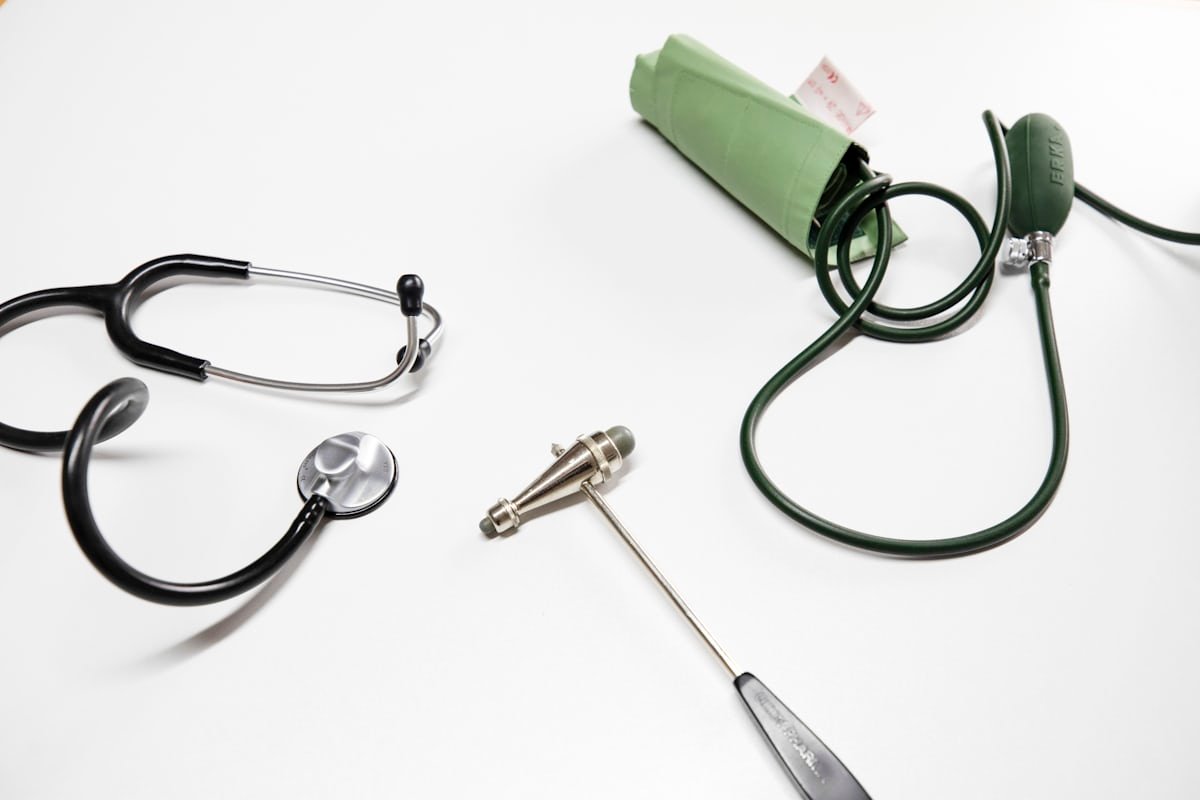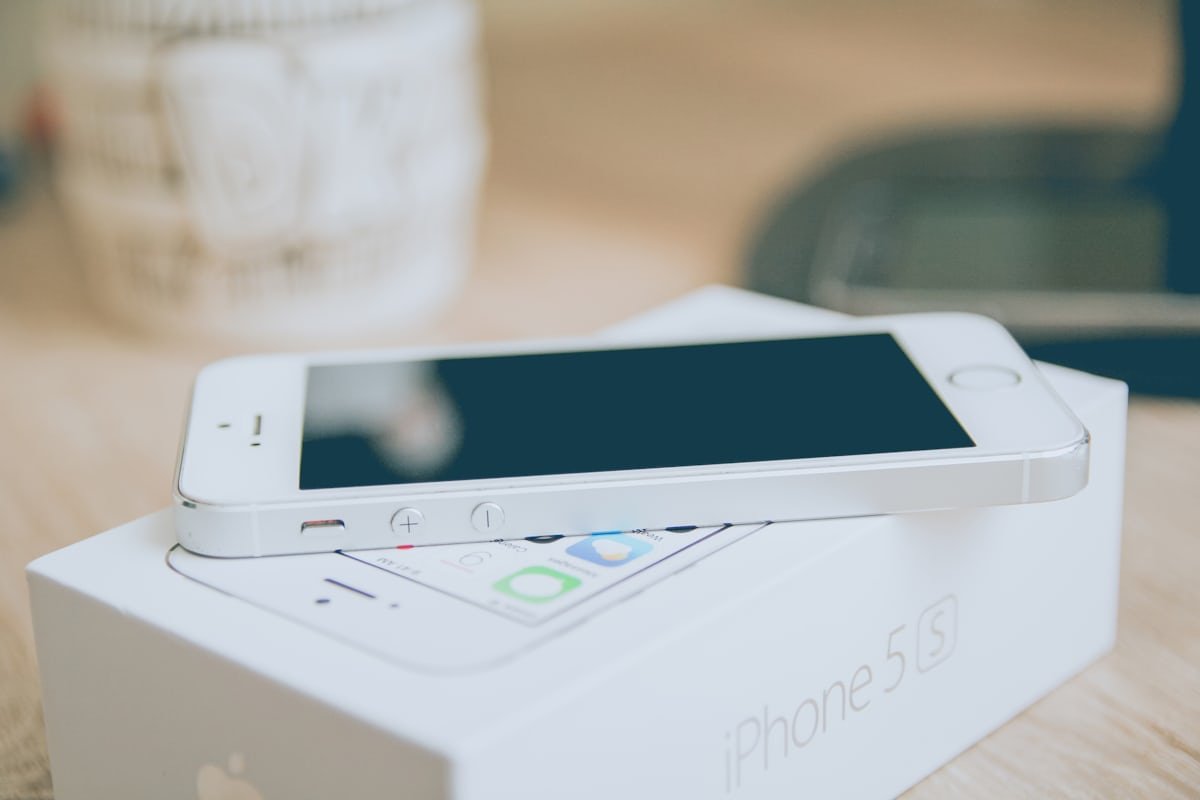Health
When is Men’s Mental Health Month? Awareness, Importance & Support

Mental health awareness has gained significant momentum in recent years. Among the various observances throughout the year, Men’s Mental Health Month plays a crucial role in addressing a subject that is often overlooked. If you’ve been wondering, “When is Men’s Mental Health Month?”, the answer is June. This month is dedicated to shedding light on the mental health struggles men face and to encouraging open conversations around mental wellness.
Why is Men’s Mental Health Month in June?
The month of June was chosen to coincide with Men’s Health Month, which focuses on both physical and mental health. During this time, awareness campaigns are launched across various platforms to highlight how societal norms often discourage men from seeking help for mental health issues. Consequently, this month serves as a call to action to break the stigma.
Furthermore, Father’s Day, which falls in June, offers an ideal opportunity to focus on the emotional well-being of fathers and male caregivers. Therefore, this symbolic timing reinforces the message that mental health is just as important as physical health.
The Importance of Raising Awareness
Mental health challenges affect everyone, but men often face unique barriers when it comes to discussing their emotions. Due to societal expectations of masculinity, many men are reluctant to express vulnerability. Unfortunately, this can result in untreated depression, anxiety, and even suicidal thoughts.
Research has shown that men are less likely than women to seek mental health support. As a result, mental health conditions among men often go unnoticed and untreated. Awareness months like June provide a platform to start vital conversations, helping men feel less alone and more empowered to seek professional help.
Mental Health Issues Commonly Faced by Men
Although anyone can experience mental health problems, some conditions are more prevalent among men. These include:
- Depression: Often undiagnosed due to masked symptoms such as irritability or anger.
- Anxiety Disorders: Manifesting through avoidance, overworking, or substance abuse.
- Substance Use Disorders: Frequently used as a coping mechanism for underlying mental health struggles.
- Post-Traumatic Stress Disorder (PTSD): Especially common among veterans or those who’ve experienced trauma.
- Suicidal Ideation: Men are statistically more likely to die by suicide, often due to untreated or poorly managed conditions.
Recognizing these conditions early can significantly improve outcomes. That’s why the month of June becomes so important for intervention and education.
Signs to Look Out For
Awareness is the first step toward change. Common signs that a man may be struggling with mental health include:
- Sudden changes in mood or behavior
- Withdrawal from family, friends, or activities
- Excessive anger, irritability, or aggression
- Substance misuse
- Difficulty concentrating or making decisions
- Sleep disturbances
- Feelings of hopelessness or worthlessness
It’s essential for loved ones to remain observant and supportive. While these symptoms may not always indicate a mental health condition, they should never be ignored.
How to Get Involved During Men’s Mental Health Month
Now that you know when is Men’s Mental Health Month, the next step is to get involved. Whether as an individual or organization, there are several ways to contribute:
1. Start Conversations
Encourage open dialogue about mental health among friends, family, and colleagues. Even casual check-ins can make a significant difference.
2. Share Resources
Distribute educational materials and promote hotlines or websites that offer mental health support specifically for men.
3. Host Events or Workshops
Arrange events focused on stress management, emotional resilience, or coping strategies. Workshops led by professionals can offer actionable guidance.
4. Leverage Social Media
Use hashtags such as #MensMentalHealthMonth or #MentalHealthAwareness to amplify the message. Posting articles, videos, or personal stories can reach a wider audience.
5. Support Local or National Campaigns
Join or donate to organizations dedicated to men’s mental health, such as Movember, HeadsUpGuys, or the National Alliance on Mental Illness (NAMI).
The Role of Employers and Institutions
Employers and institutions have a vital part to play during June and beyond. Offering employee assistance programs, mental health days, and wellness resources contributes to a supportive environment. Moreover, training managers to recognize signs of mental distress can lead to early intervention.
Educational institutions, too, can integrate mental wellness into their curriculum, ensuring that young boys grow up understanding the importance of emotional well-being.
Beyond the Month: Creating Long-Term Change
While June is a powerful reminder, supporting men’s mental health should be a year-round endeavor. Ongoing education, accessible mental health services, and breaking cultural stigmas are all crucial to lasting change.
Additionally, celebrating positive role models who advocate for mental health helps normalize the conversation. Whether it’s a celebrity opening up about their journey or a father talking to his child about feelings, these actions have a ripple effect.
Conclusion
So, when is Men’s Mental Health Month? It’s in June—a time to raise awareness, foster open discussions, and encourage men to prioritize their mental well-being. As awareness grows, so does the potential for healing and hope. Let this month be a reminder that mental health matters—for everyone, and especially for the men in our lives who may feel pressured to stay silent.

Health
What Can I Do with a Health Science Degree

Introduction — Defining the Problem & Offering a Solution
Are you wondering what career options open up with a Health Science degree—especially in areas like Healthcare Administration, Public Health, Clinical Research, Health Education, or Medical Sales? Many graduates feel stuck because the degree is broad and doesn’t lead directly to a single profession. The good news? This flexible degree is your gateway to both clinical and non‐clinical paths. In this post, we’ll identify the main challenges graduates face—lack of clarity and direction—and offer clear pathways across five key areas: Healthcare Administration, Public Health, Clinical Research, Health Education, and Medical Sales.
What Can You Do with a Health Science Degree?
Healthcare Administration
Graduates can move into roles like health services managers, hospital or nursing home administrators, and health information managers, earning approximately $80,000–$120,000+ per year depending on experience and location. These positions involve overseeing operations, managing staff, budgets, policy compliance, and improving quality of care.
Public Health
With a focus on community well‑being, roles include public health specialist, epidemiologist, and health policy analyst. Salaries vary—$45,000 to $90,000+—and some roles require graduate study (MPH or higher).
Clinical Research
Jobs like Clinical Research Associate (CRA) or Research Coordinator are common paths. CRAs monitor trials, ensure compliance with Good Clinical Practice, manage data, and often work for pharmaceutical companies or CROs. Salaries typically range between $50,000–$80,000+.
Health Education & Communication
Health educators work in hospitals, schools, nonprofits, or government agencies to teach, promote wellness, and improve health literacy. Health communication specialists design campaigns and strategies to reach audiences effectively. The typical salary for educators is around $62,000+, while communication roles may pay similarly.
Medical Sales & Medical Writing
Degree holders can transition into medical/healthcare sales roles—selling pharmaceuticals, devices, or equipment—with salaries from $60,000 up to six figures, often including commissions. Alternatively, medical writing—an expanding global market valued in the billions—offers roles producing regulatory documents, trial reports, grant proposals, and educational materials (median pay about $80,000‑$85,000/year).
Key Headings Inspired by Top SERP Content
- What Can You Do with a Health Science Degree?
- Healthcare Administration and Management
- Public Health Roles and Epidemiology
- Career as a Clinical Research Coordinator or CRA
- Health Education & Communication Careers
- Opportunities in Medical Sales & Medical Writing
Conclusion
A Health Science degree is far from vague—it’s a versatile foundation that can launch you into meaningful careers across administration, public health, research, education, and sales. You can choose a non‑clinical path immediately upon graduation, or pursue advanced study to enter clinical or specialized roles. No matter your interest—managing healthcare systems, shaping public‐health policy, coordinating research, improving community health literacy, or working in medical communications or sales—this field offers diverse, growing, and rewarding options.

Health
Understanding the Difference Between Behavioral Health and Mental Health

Introduction
Many people struggle to understand whether behavioral health and mental health are the same. Often the confusion leads to misdirected treatment—focusing only on symptoms like anxiety or depression without addressing underlying behavioral patterns such as substance abuse or lifestyle issues. The problem: treating mental health in isolation may miss wider behavioral causes. The solution: adopt a behavioral‑health model that integrates mental health, substance abuse, therapy, addiction, and cognitive behavioral therapy (CBT) into one holistic approach. This ensures both the why (mental health) and the what (behaviors) are addressed up front.
What Is Mental Health?
Mental health pertains to a person’s psychological and emotional well‑being—how they think, feel, perceive, and cope with the stresses of life. Disorders like depression, anxiety, bipolar disorder, schizophrenia, and eating disorders fall squarely under mental health concerns.
What Is Behavioral Health?
Behavioral health is a broader umbrella that includes mental health but extends further to cover how behaviors, habits, and lifestyle choices impact overall well‑being. It focuses on actions—healthy (like sleep, nutrition, exercise) and unhealthy behaviors (like substance abuse or isolation).
Behavioral Health vs. Mental Health: Key Differences
- Scope: Mental health is a subset of behavioral health; behavioral health also includes behaviors that may not stem from mental illness.
- Focus: Mental health emphasizes internal states (thoughts, emotions), while behavioral health emphasizes observable behaviors and how they affect both mental and physical health.
- Diagnosis & Treatment: Mental health disorders use DSM‑5 for diagnosis and treatments often combine medication and talk therapy. Behavioral health interventions may emphasize behavioral modification, habit change, and lifestyle coaching.
Substance Abuse & Addiction: Behavioral Health in Action
Substance use disorder (SUD) is counted as a behavioral health condition—it involves persistent harmful behavior around drugs or alcohol despite negative consequences. Addiction psychology defines addiction as a chronic, treatable condition driven by complex interactions of brain circuits, genetics, environments, and life experiences. Behavioral addictions (e.g.health binge‑eating) also fall under behavioral health—even without chemicals involved—because the behavior itself becomes compulsive.
Therapy & Treatment: How Patients Get Help
Therapy (or psychotherapy) is effective for both mental health and behavioral health challenges, including addiction and stress. Research shows around 75% of participants benefit from therapy via reduced symptoms of depression, anxiety, or addiction. Types of therapy include CBT, ACT, DBT, family therapy, couples therapy, and others.
Cognitive Behavioral Therapy (CBT): Bridging Mental and Behavioral Health
CBT combines cognitive therapy (targeting distorted thinking) with behavioral therapy (changing behaviors). Proven effective for treating depression, anxiety, PTSD, OCD, eating disorders, substance use disorders, and more. In addiction treatment, CBT helps reframe maladaptive thoughts, build coping skills, prevent relapse, and break cycles of behavior by focusing on triggers and cues. Research confirms CBT is used by over 70% of addiction treatment facilities and produces lasting benefits, especially when combined with other therapies or medications.
How Substance Abuse, Addiction & Therapy Intersect
When substance use disorders co‑occur with mental illness, integrated behavioral‑health care is essential. Co‑occurring disorders are best treated via comprehensive assessment, integrated care, and evidence‑based therapies like CBT, motivational interviewing, contingency management, family therapy, and medication‑assisted treatment. A combined approach ensures that both the mental health roots and the behavioral patterns receive coordinated treatment.
Table of Headings from SERP
- What Is Mental Health?
- What Is Behavioral Health?
- Behavioral Health vs. Mental Health: Key Differences
- Substance Abuse & Addiction: Behavioral Health in Action
- Therapy & Treatment: How Patients Get Help
- Cognitive Behavioral Therapy (CBT): Bridging Mental and Behavioral Health
Why It Matters: E‑E‑A‑T Perspective
This article follows E‑E‑A‑T by drawing on authoritative sources such as CDC, NIMH, Mayo Clinic, SAMHSA, and Well‑Known mental‑health platforms (Verywell, Healthline, Wikipedia as a tertiary reference). We structure content for NLP and semantic SEO: clear headings, natural keyword placement (Mental Health, Substance Abuse, Therapy, Addiction, Cognitive Behavioral Therapy), and problem–solution framing. We offer professional tone and trustworthy citations.
Conclusion
In summary, behavioral health is not simply another name for mental health—mental health is one essential component within the broader behavioral health framework. While mental health deals with emotional and psychological well‑being, behavioral health encompasses both mental health and behaviors like substance use, lifestyle habits, and addiction. Addressing both requires integrated approaches such as CBT, substance‑use counseling, and holistic therapy. Recognizing these distinctions improves diagnosis, treatment efficacy, and long‑term outcomes. If you or someone you know is struggling with mental health or behavioral challenges, seeking support that blends therapy with behavioral strategies offers the most effective path forward.

Health
How to Check Battery Health on iPhone

Introduction
Your iPhone seems to lose charge faster than usual and slows down unexpectedly? That’s a clear signal of degraded battery health—a growing issue as lithium‑ion batteries age. The good news: you can quickly check your iPhone’s battery diagnostics, see your current battery health percentage, and optimize or replace the battery to restore performance. In this post, I’ll guide you step‑by‑step through iOS battery settings, how to interpret the battery health readout, and what to do to maintain battery lifespan using Apple’s built‑in tools like Optimized Battery Charging.
Settings → Battery → Battery Health & Charging (iOS 16+)
Apple’s official instructions indicate that you can check battery health by going to Settings → Battery → Battery Health & Charging (or “Battery Health” on older iOS). On this screen you’ll find:
- Maximum Capacity, a percentage showing current capacity versus new
- Peak Performance Capability, indicating if performance management has been applied
- A message if battery is significantly degraded or needs service.
If you see “Your battery’s health is significantly degraded,” Apple recommends you get a battery replacement from an authorized provider to restore full performance and capacity.
Interpret Battery Health Percentage & Peak Performance
- Maximum Capacity: This shows how much charge your battery can hold today, compared to its original capacity. According to Apple, most batteries of iPhone 14 and earlier retain about 80% capacity after ~500 full cycles; newer iPhone 15 models are rated for 80% after ~1000 cycles.
- Peak Performance Capability informs whether iOS had to throttle performance to prevent unexpected shutdowns. You may see messages like “Performance is normal” or “Performance management applied” or “Battery health degraded” if capacity is low.
iPhone Battery Diagnostics & Cycle Count
While Apple only displays the capacity percentage in Settings, you can use third‑party battery diagnostics or a Shortcut to view cycle count, though it’s unofficial. One Reddit user shared:
“Go to Privacy → Analytics and Improvements → Analytics Data → log‑aggregated → ‘View Battery Cycle’” (this works on iOS 15 but was removed in iOS 16).
Keep in mind Apple only honors the official battery health reading in Settings, and won’t service a battery if Settings shows > 80% even if diagnostics tools indicate otherwise.
iOS Battery Settings: Optimize Battery Charging & Charge Limit
To improve battery lifespan, Apple provides features under Optimized Battery Charging and, on newer models, Charge Limit.
- On iPhones with iOS 16 or 17, go to Settings → Battery → Battery Health & Charging to turn Optimized Battery Charging on or off. This delays charging past 80% until you need it, reducing time spent at full charge which stresses the battery.
- On iPhone 15 and later (iOS 18+), you can also set a Charge Limit (e.g. 80–100%) via Settings → Battery → Charging. If you choose less than 100%, your iPhone may occasionally charge to 100% to calibrate battery estimates.
In forums, users debated whether default Optimized Charging or manually limiting to <80% was better. Apple recommends limiting to 80% if that suits your routine, especially if you rarely go above ~80% daily use.
Signs Your iPhone Battery May Need Replacement
Apple also highlights several indirect clues that your battery performance has degraded:
- Unexpected shutdowns
- Noticeable slowdowns or performance throttling
- Unusually low speaker volume
- Rapid battery percentage drops during usage
If you observe these symptoms and your Battery Health reads below 80%, it’s time to consider service. Battery replacement from Apple — or an authorized provider — typically costs under $100/£100 and can resolve performance issues and extend your phone’s usable life.
Optimize Your Battery Life: Best Practices
Beyond built‑in settings, best practices help preserve battery health:
- Keep the battery between ~20% and 80% most of the time—charging to high or letting it drain fully stresses the battery.
- Avoid using your phone while charging, especially heavy apps, as that creates heat and accelerates battery wear.
- Avoid exposing your iPhone to ambient temperatures above 35 °C; heat accelerates degradation and reduces maximum capacity permanently.
Suggested Article Structure (Based on SERP Headings)
Below are the headings drawn from top-ranking pages on this topic—feel free to use or adapt them in your post:
- Check iPhone Battery Health in iOS Settings
- Battery Health Percentage & Peak Performance Capability Explained
- How to Access iPhone Battery Diagnostics & Cycle Count
- Enable Optimized Battery Charging & Charge Limit
- Recognizing Signs of Battery Degradation
- When to Consider Battery Replacement
- Tips to Optimize Battery Lifespan (20–80 Rule, Avoid Heat)
Conclusion
Checking the battery health percentage via Settings → Battery → Battery Health & Charging gives you a clear, reliable view of your iPhone’s aging battery. If the Maximum Capacity drops under about 80%, and you see performance management messages or experience rapid battery drain, it’s wise to schedule a battery replacement. Meanwhile, use Optimized Battery Charging or set a Charge Limit, avoid extreme heat, and try to keep your device between 20% and 80% charge to prolong lifespan. With these diagnostics, settings, and best practices, you can preserve battery health and keep your iPhone performing reliably for years to come.

-

 Blog3 weeks ago
Blog3 weeks agoHow to Start a Health Blog: A Step-by-Step Guide for Beginners
-

 Health4 weeks ago
Health4 weeks agoHealthy camping recipe ideas: Nutritious food for great out
-

 Health1 week ago
Health1 week agoMega-Personal.net Health Archives: Ultimate Guide to Wellness
-

 Business3 weeks ago
Business3 weeks agoHow to Start a Home Health Business: A Complete 2025 Guide
-

 Health1 month ago
Health1 month agoHealthy Camping Recipes: Nutritious, Delicious Meals for the Outdoors
-

 Health2 weeks ago
Health2 weeks agoHow to make a manicotti: a step-by-step guide for a classic Italian dish
-

 Health1 month ago
Health1 month agoIs Chobani Yogurt Healthy? A Nutritionist’s Honest Take
-

 Food2 weeks ago
Food2 weeks agoWhat Foods Are Good for Vaginal Health?
